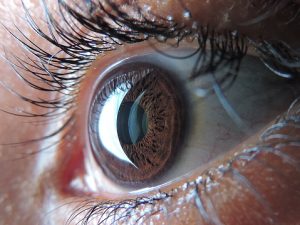
You will find information on what causes eye muscle weakness, a blood clot in the eye, as well as blurred vision in one eye. We have also included some additional information on the reasons behind puffy eyes and ophthalmoplegia
Detached retina: Causes, symptoms, treatment, and prevention
A detached retina occurs when the retina moves away from its normal position. This can be the result of a tear, break, or hole. When the vitreous gel pulls loose—this is a clear gel inside of the eye and in front of the retina—it can exert traction on the retina. If the retina is already weak, it will tear and ultimately detach.
Once the retina detaches, the liquid from the vitreous gel starts accumulating behind the retina, further causing it to separate, leading to complete retinal detachment. Continue reading…
Puffy eyes, or bags under the eyes, can occur for numerous reasons, and can even be hereditary. Puffy eyes are commonly associated with weakening of the muscles supporting the eyelids brought on by aging. As a result, fat that supports the eyes moves to the lower eyelids, making them look puffy. Fluid may also accumulate in the space below your eyes, also promoting the swelling.Cases when puffy eyes are associated with a serious medical condition are very rare. As a rule, it is a cosmetic concern. Continue reading…
Cases when puffy eyes are associated with a serious medical condition are very rare. As a rule, it is a cosmetic concern. Continue reading…
Blurred vision can be temporary or chronic, and in some cases, people can experience blurred vision in only one eye. To properly manage blurred vision, you have to understand the underlying cause. Here we examine what causes blurred vision in one eye as well as the symptoms and potential home remedies.
Blurred vision is best described as a loss of sharpness or a foggy view. Some people are lucky in that their blurry vision can be corrected by simply wearing glasses. For others, it isn’t that simple—it could be a sign of a serious health issue. Continue reading…
The eyes are delicate organs and can be prone to injury and damage. Blood clots in the eye often appear as red spots and can occur spontaneously. They are generally considered harmless and disappear on their own. These clots form underneath the outermost layer of the eye, called the conjunctiva, and are the result of accidental injury.
The medical term for this condition is subconjunctival hemorrhage. It may be described as a patch or spot of redness in the whites of the eye and could shift position. This white part of the eye consists of many blood vessels and nerves. Due to their delicate nature, these blood vessels get ruptured in response to a direct hit or injury. Consequentially, a clot forms at damaged sites to prevent excessive blood loss. Over time, these red spots will change in color as your body clears the clot, restoring your eyes to normal. Continue reading…
Ophthalmoplegia or eye muscle weakness is a condition that is characterized by either paralysis or weakness of the eye muscles. It can lead to a lack of eye mobility and even permanent eye drooping since it can affect one or more of the six muscles that hold the eye in place.
There are two different types of ophthalmoplegia: chronic progressive external ophthalmoplegia and internal ophthalmoplegia (INO). Chronic progressive ophthalmoplegia or PEO tends to appear in adults between the ages of 18 and 40. Usually, it starts with drooping eyelids and difficulty controlling muscles that are normally used to coordinate the eyes. Internal ophthalmoplegia impacts lateral eye movement and often leads to double vision. Continue reading…